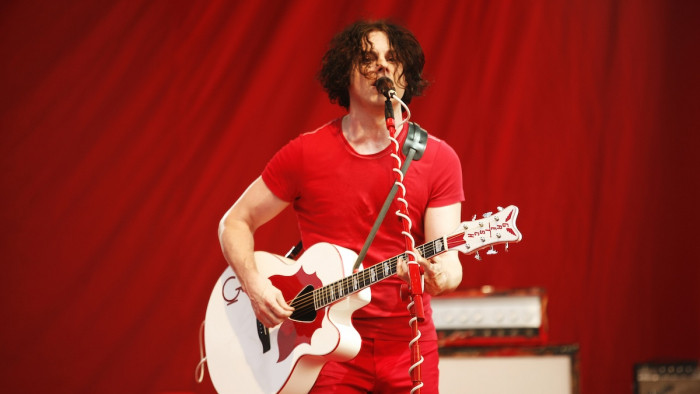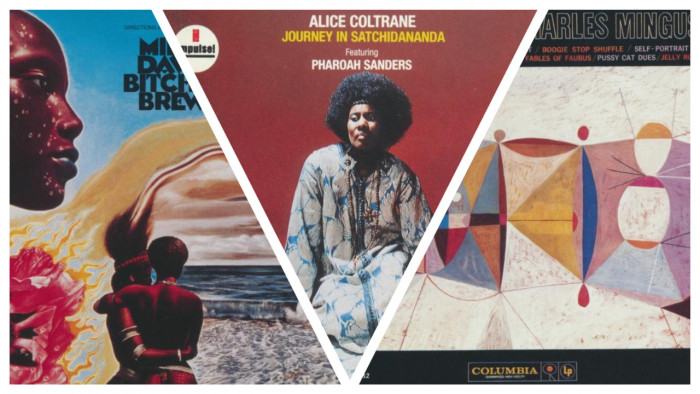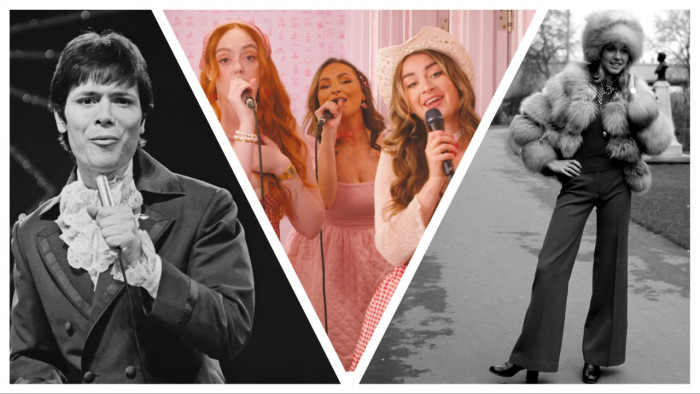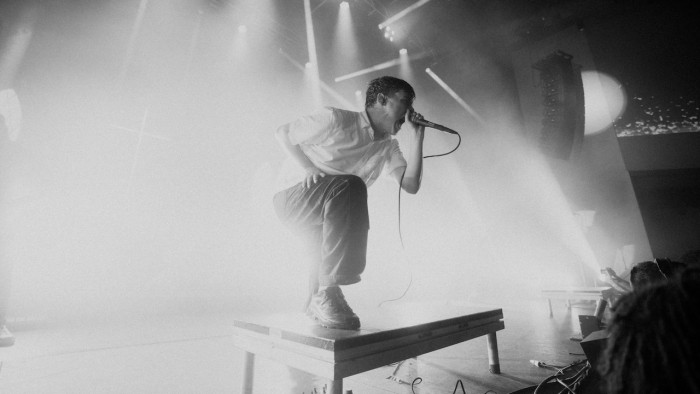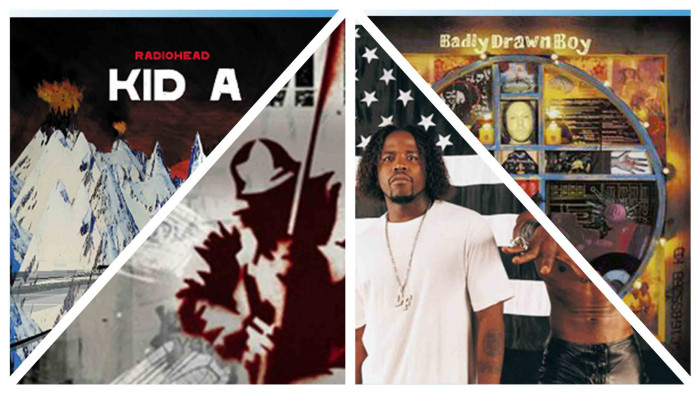Mick Jagger on the fine art of Rock'n'Roll
Mick Jagger takes ShortList on a world-exclusive tour of the Stones’ career-spanning exhibition at the Saatchi Gallery. It’s entitled ‘Exhibitionism’. Funny, that


Mick Jagger takes ShortList on a world-exclusive tour of the Stones’ career-spanning exhibition at the Saatchi Gallery. It’s entitled ‘Exhibitionism’. Funny, that
It’s a big space, isn’t it?” says Mick Jagger, correctly, of the soon-to-be home to the Rolling Stones’ career-spanning exhibition, the Saatchi Gallery. “Though not big enough for some of the things I want to put in there.”
Square footage may have thwarted him, but the fact that he was lobbying for the inclusion of the 150ft stage walkway from the 1997 ‘Bridges To Babylon’ tour should give some indication of how extravagant, ambitious and bigger-than-anything-else-of-its-kind Jagger and the Stones intend this half a century-spanning retrospective to be.
Initial discussions around the appropriately-titled ‘Exhibitionism’, he tells me in a meeting room at the Stones’ London HQ, began 10 years ago. Subsequently it was inspired, variously, by the Metropolitan Museum Of Art’s Costume Institute in New York, the ABBA museum in Stockholm, the touring ‘Human Bodies’ show and the McQueen ‘Savage Beauty’ show at the V&A. In other words, it will be something far grander and more interesting than just a room full of great pictures of the Rolling Stones (not that there would be anything wrong with a room full of great pictures of the Rolling Stones).
And even now, with little time before the doors open in April, ideas and concepts are still being thrown around. It’s a tough ask: how do you comprehensively celebrate 50 extremely eventful years in the life of the greatest rock’n’roll band ever?

So where do you start with something like this? Do you have a lock-up of various Stones artefacts somewhere?
Well, we kind of threw all our personal things into a storage place over the years. I throw everything away, actually, so I’m like the worst person. You know, some people hoard, some are in the middle and some people throw away. I’m a throw-away person.
When you say throw away, you don’t mean put in storage: you mean into the bin?
Yeah, I literally throw them away. I buy a lot of shirts and… well, I went into my cupboard the other day and thought, “I just can’t get any more into the cupboard.
I literally can’t get any more in.” So I keep, like, one nice one and then I send all the rest to the charity shop. So what can you do? They’re gone. And I’ve always
done that. So someone’ll be looking at pictures and asking, “Where’s that shirt?” And also: “Where’s your notebooks of your songs?”
You mean the lyric sheets?
Yeah, I don’t have notebooks of my songs. And a lot of them were nicked and they come up at auction. I’ve got a few recent ones, but I don’t have a lot of them, which is a shame. I didn’t even have a notebook in those days. I know some people did, but I just never did it. I do now, but I don’t hoard the notebooks. I’m just terrible with all that. And I don’t think Keith is any better. I think he’s just as bad as me. He hasn’t got anything like that at all. I mean, maybe the odd little page miraculously preserved.

I suppose in 1965 or whatever, the idea that you’d need to file away lyric sheets for an exhibition at the Saatchi Gallery in 50 years’ time would have seemed…
…precocious! Well, I knew people then that thought like that, and I laughed at them. Filmmakers tended to think more in that way because they were more aware of history. Because film had a history, whereas rock music didn’t have a history at that point. You didn’t think about ‘the history of rock music’… I mean, of course we didn’t think about it in 1964, archiving things. But some people think like that. Andy Warhol archived everything he ever did, for instance. He was a manic hoarder. So when I went home now, if I were Andy I would take this [picks up pen] with me, and he’d put it all in a garbage bag and just label it, and put a date on it, and it would go into storage. Every single day. If he’d go to a restaurant, he’d steal a knife and fork. He’d take the card of the restaurant, or the menu. Plus, he’d take pictures and Polaroids of everything of the day. They would all go in. And good thing he did that, because we now have all the stuff – all the artwork – that Andy did.
So one of the rooms is going to be based on the flat that you, Keith and Brian shared at 102 Edith Grove in Chelsea…
Yeah, a reproduction of our first flat. It’s very funny because when you go into the first room, it’s a kind of intro room all about the Rolling Stones’ shows. All the shows we’ve ever done, all over the world. So it’s a big map of the world with all the towns we’ve done, and it’s all moving and counting. It’s quite impressive: this very modern, quite slick electronic screen thing. And then you go into the second room, which is this grotty flat, basically [laughs].
So it’s the lounge of the flat?
The flat was two rooms: a living room and a bedroom. Then upstairs on the landing there was a bathroom, and upstairs on the very top there was a shared kitchen. It’s still there. We got the floor plan. And so we kind of reproduced that room as it was in 1962, or whenever it was. We’ve obviously got to get that absolutely finalised, what we consider to be authentic.
What was it like in 1962? Was it a fairly standard shared young men’s flat?
It was a nice Victorian house, but fairly grotty. Not very done up. But it’s going to look like, taste like and smell like that flat.
Smell like?
Yeah, you know: dirty old smells – gas fires, a bit damp… socks [laughs]. You know, just… get me outta here!

Will there be any other stuff along those more kind of interactive, three-dimensional lines in the exhibition?
We’ve got a room that’s a recording studio, which is basically modelled on Olympic [Studios, in Barnes, where the Stones recorded all their albums from 1966-1972]. It’s set up as you would have had it set up in the room with guitars. So you’re looking at that as if you’re looking from the control room, as if from where the engineer would be. And there’s another room where you go into what is a backstage of a stage: like being backstage before you go on. So right behind the stage – I don’t mean the dressing room. And there’s a guitar room with 12 or 14 well-known guitars that we used on different well-known songs. In that room we’ve got eight consoles where you can mix certain songs.
So people will be able to remix Rolling Stones songs?
Yeah. From wherever eight-track recorders began. Earlier than that they’re not eight tracks, and so there’s no point in putting those up there if it’s two tracks or something! But that room’s a bit reverential, let’s say. You know, guitars in cases behind glass.
The clothes, too, must play a big part?
You’ve got a clothes and style room. Loads of costumes from different periods… so lots from me [laughs]. Streetwear, stagewear, what people were wearing in that period. I think that room at the moment ends up with eight different costumes for Sympathy For The Devil. Because there’s a lot of them.
Are there any outfits – or things – you wish you had that are gone?
Not really. There are clothes items I’ve tried to get back from my children who took them [laughs]. But, I mean, we’ve got plenty of clothes. I do wish I had all the notebooks. We were going to have a songwriting room, but we don’t know how we are going to do it. A room that expresses songwriting. Like in the ABBA museum, there’s a reproduction of the shed where they used to write. It’s a bit like how Roald Dahl had a little shed. But Keith and I never had a shed – probably a good thing, really. We did quite a lot of songwriting everywhere.
A lot of the earlier songs would have been written while on the road, right?
Yeah, in hotel rooms. I mean, you could reproduce an inn room, but it’s not going to be that interesting. What are you going to put in it? Plus, it’s not really real. There’s not really ‘the shed’. It’s not Roald Dahl’s shed, or ABBA’s shed, with a view of the field, or whatever it is.
When writing specific songs, do you remember the times and places, even?
I can remember specific things, but they all tended to be in bits.
So a verse here, a chorus there…
Yeah, this bit here, and then you wrote there, then you went into the studio and did that. Then you were in a hotel in Minneapolis when you wrote this. It’s not like you had a studio and you wrote in it. Could invent a shed. That would be good, wouldn’t it? Can you imagine, that little shed? Somewhere… They’d all say, “I don’t remember seeing this before.” “Well, I assure you they were written in this shed!” So anyway, that’s still one of my problems. I mean, we don’t have to have it, but it’s good to have. It’s an important part.

What’s the strangest item that’s been uncovered in all of this?
Well, we have a whole room of odd objects, which we keep calling different things. I can’t remember exactly what is in this room. A lot of odd things: like the barber’s chair we used as a make-up chair. I don’t know, all kinds of very odd things make up this room. Just personal objects that aren’t necessarily connected to recording or stage. Things people have either kept, or people have bought, or have donated to the exhibition. What did they used to call it? A cabinet of curiosities. When people used to collect mad things in no particular order and just put them behind a glass cabinet… This is a bit like that.
It sounds like there’s a lot of stuff going on, sounds very varied.
It’s about trying to get a combination between a museum and, like, fun. So that it’s not all reverential. Some of it is really slick, like the opening room. But then it’s not all slick. There’s a good combination of slick, then dirty, then funky, then reverential. So it’s got a good balance in there. That’s the thing – to get the balance right.
‘Exhibitionism’ is at the Saatchi Gallery from 5 Apr-4 Sep; stonesexhibitionism.com
(Images: Philip Townsend, Helmut Newton, Rolling Stones archive)
